
Find Help
More Items From Ergsy search
-

What is plasma, and why might it be transfused?
Relevance: 100%
-
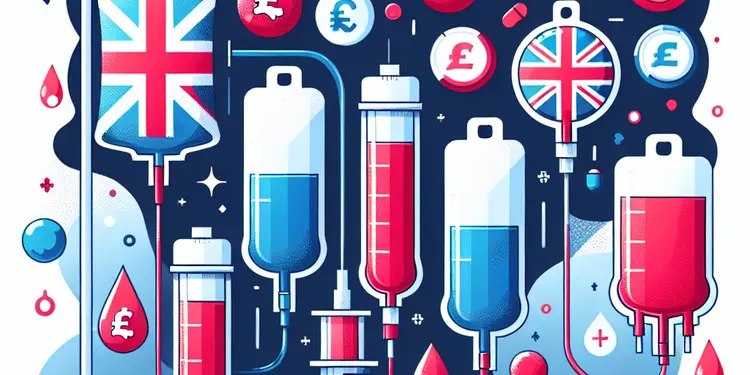
What types of blood products can be transfused?
Relevance: 65%
-
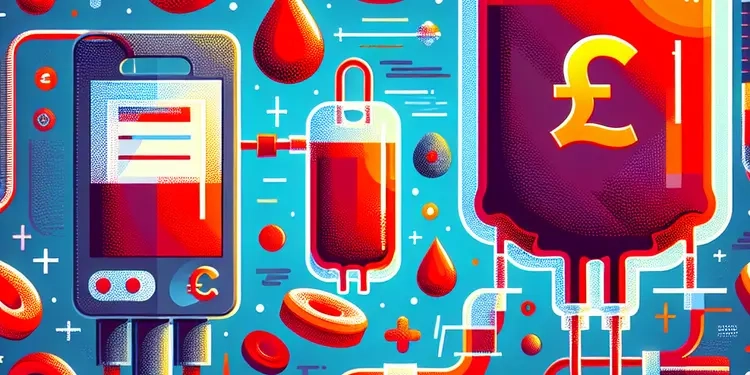
What is a blood transfusion?
Relevance: 60%
-

Blood Product Transfusions
Relevance: 60%
-

Blood Transfusion
Relevance: 56%
-
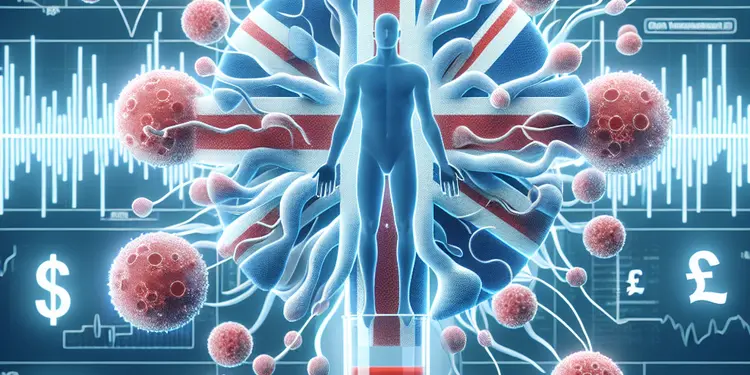
Can syphilis be transmitted via blood transfusion?
Relevance: 53%
-
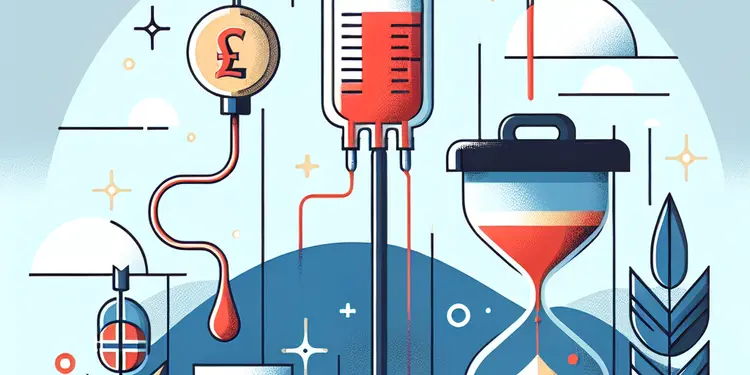
How long does a blood transfusion take?
Relevance: 52%
-
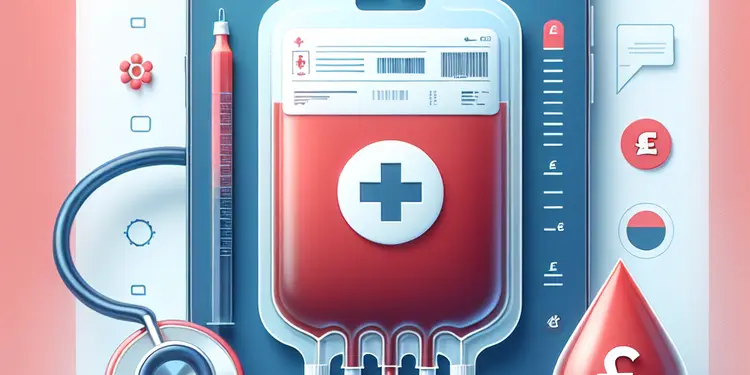
Can bacterial infections be transmitted through blood transfusion?
Relevance: 49%
-
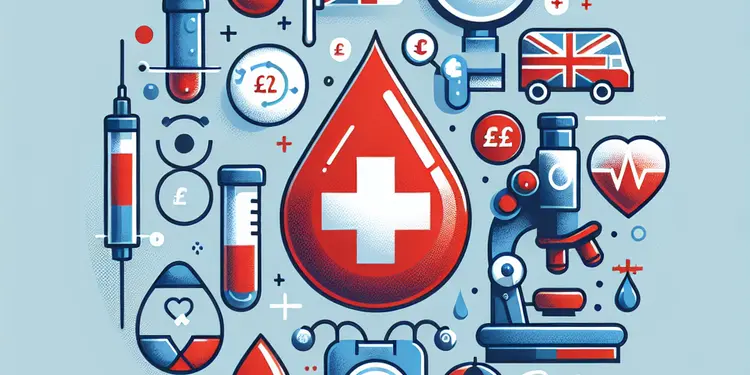
How do healthcare providers match blood for transfusions?
Relevance: 47%
-
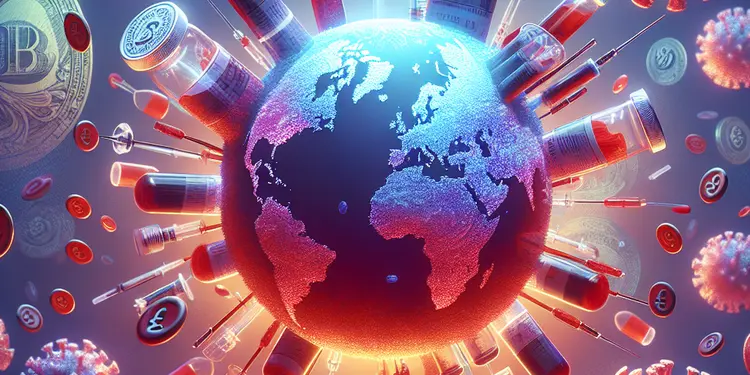
Can cytomegalovirus (CMV) be spread through transfusions?
Relevance: 45%
-
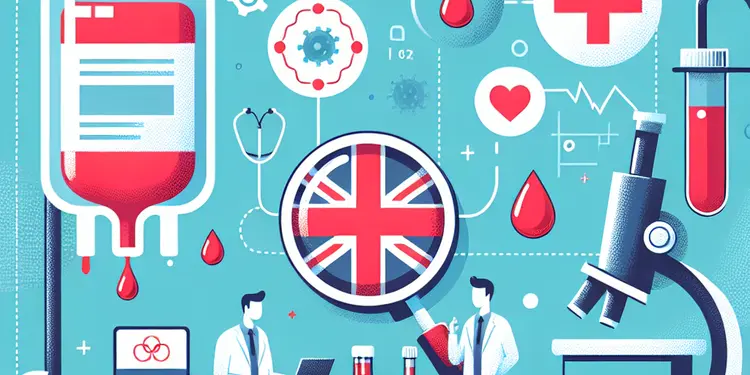
Can you get any prion diseases from blood transfusion?
Relevance: 45%
-
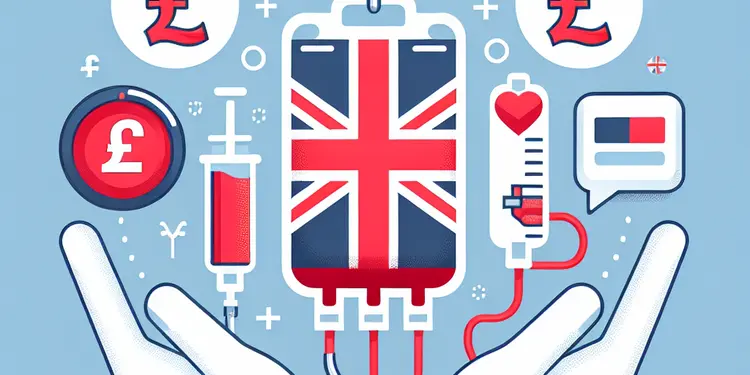
Can COVID-19 be transmitted through blood transfusions?
Relevance: 44%
-
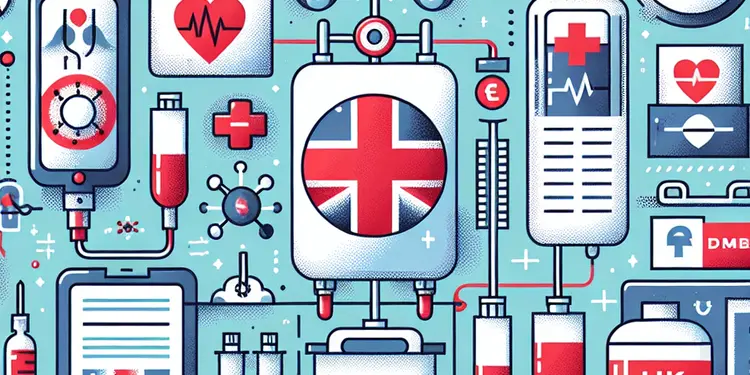
What measures are taken to prevent disease transmission in blood transfusions?
Relevance: 43%
-
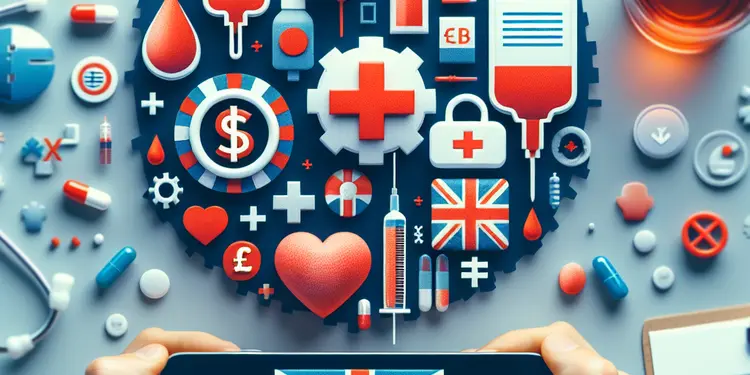
Are there risks associated with blood transfusions?
Relevance: 42%
-
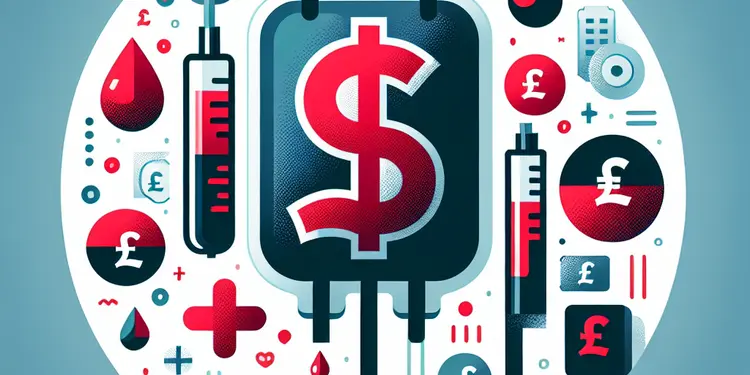
What are some common reasons blood transfusions are needed?
Relevance: 42%
-
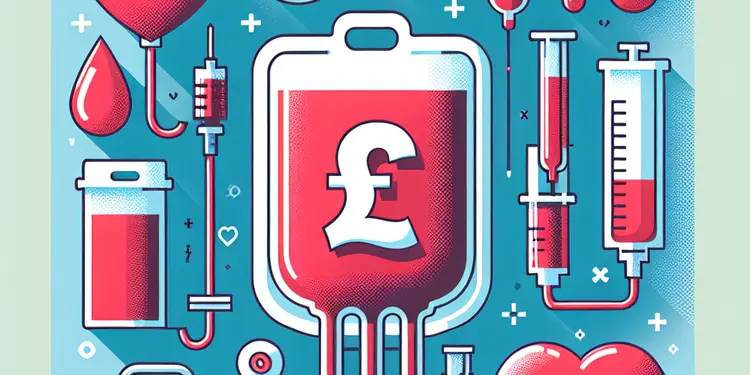
Can HIV be transmitted through blood transfusions?
Relevance: 42%
-
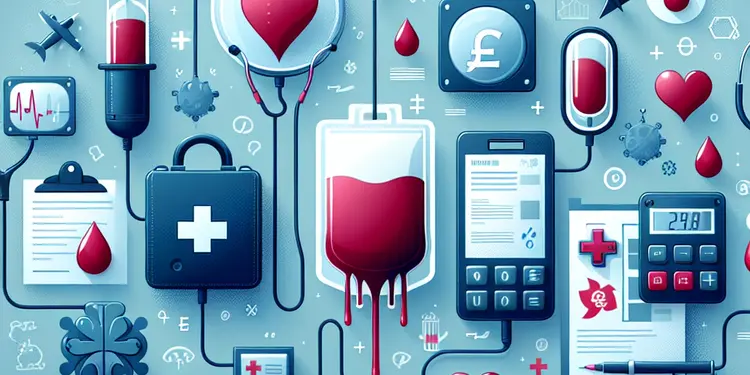
Can certain medical conditions prevent receiving blood transfusions?
Relevance: 41%
-
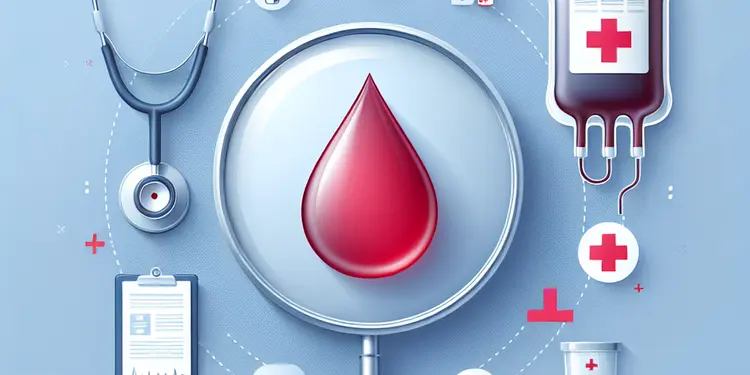
How do doctors determine how much blood is needed for a transfusion?
Relevance: 41%
-
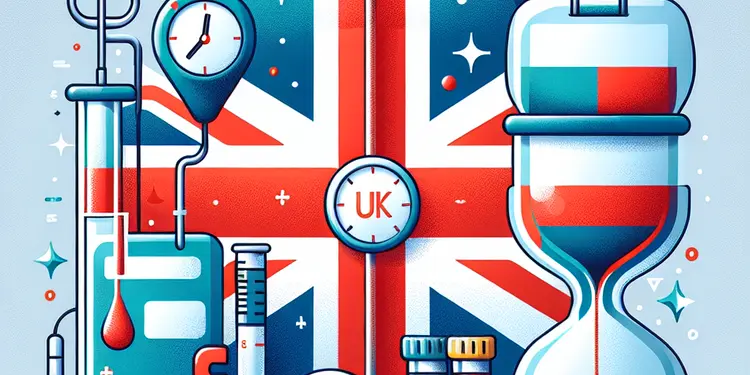
Is there an age limit for receiving blood transfusions?
Relevance: 41%
-
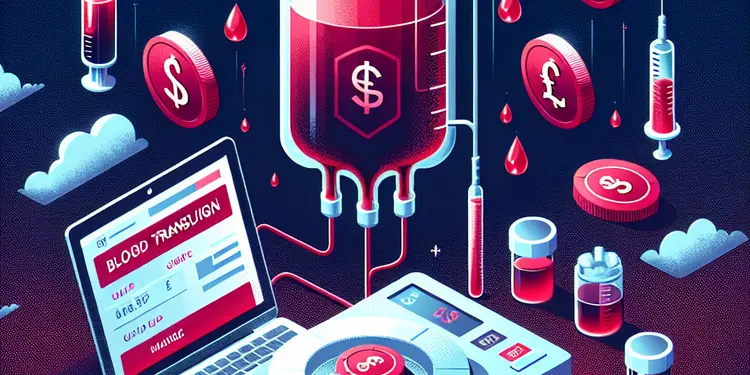
Why might someone need a blood transfusion?
Relevance: 40%
-
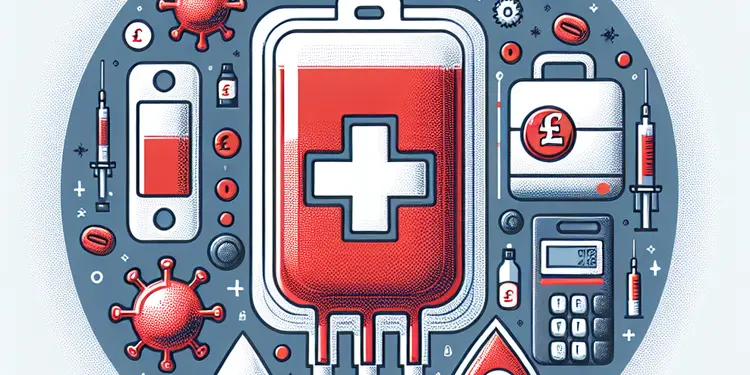
Is HTLV a risk in blood transfusions?
Relevance: 40%
-
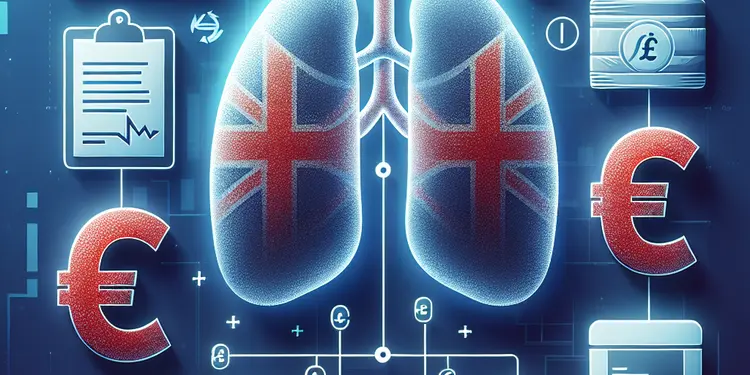
Is Hepatitis B a risk in blood transfusions?
Relevance: 39%
-

What diseases can be spread by blood transfusions?
Relevance: 39%
-
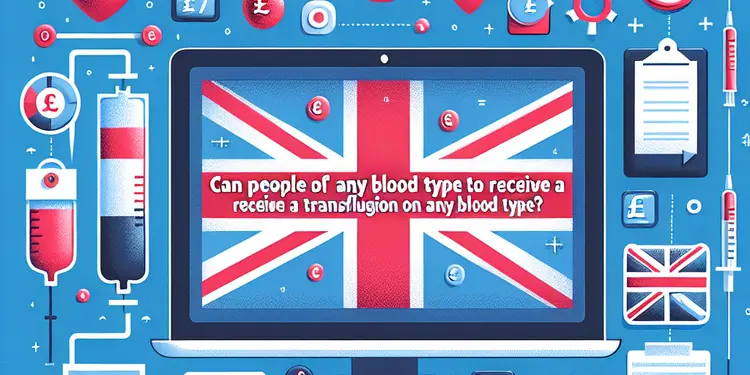
Can people of any blood type receive a transfusion of any blood type?
Relevance: 39%
-
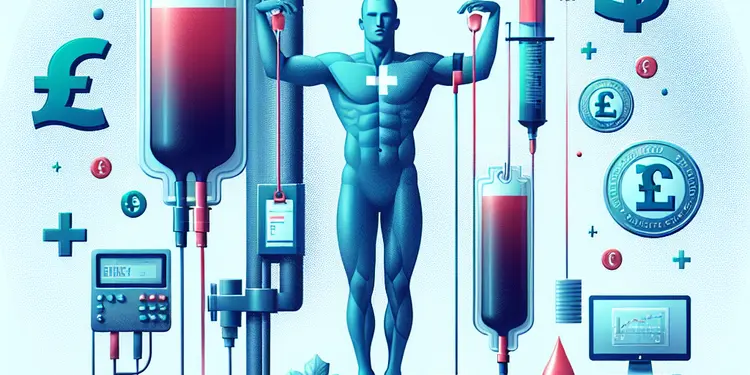
Can someone have a reaction to a mismatched blood transfusion?
Relevance: 39%
-
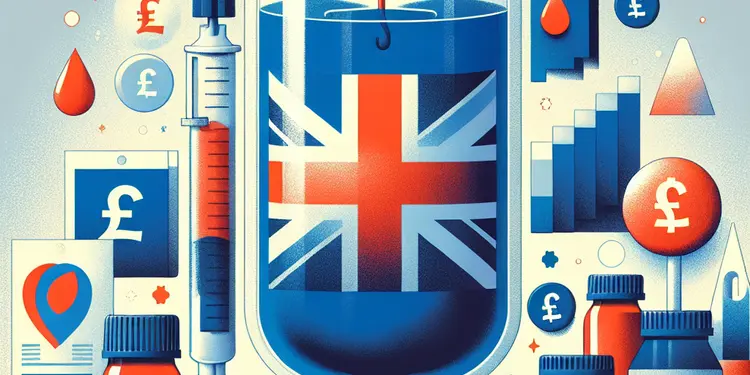
Is Chagas disease a concern with blood transfusions?
Relevance: 38%
-
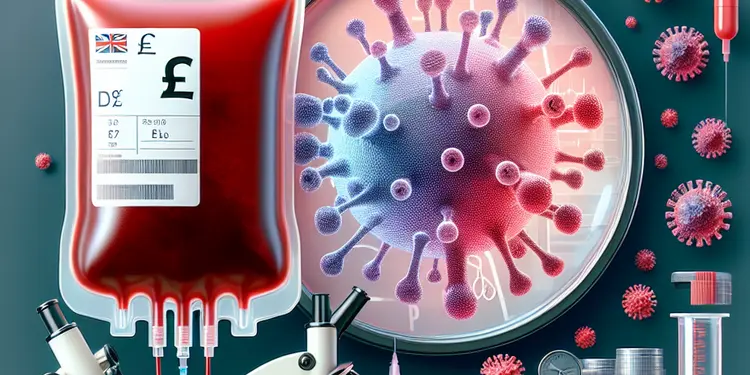
What is the most common disease transmitted by blood transfusion?
Relevance: 37%
-

Are there any parasites that can be transmitted through blood transfusions?
Relevance: 37%
-
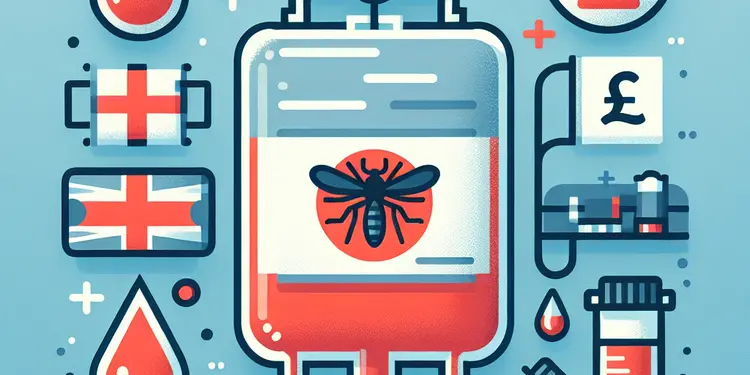
Can Dengue fever be transmitted through blood transfusions?
Relevance: 37%
-

Is malaria still a concern for blood transfusion safety?
Relevance: 36%
-
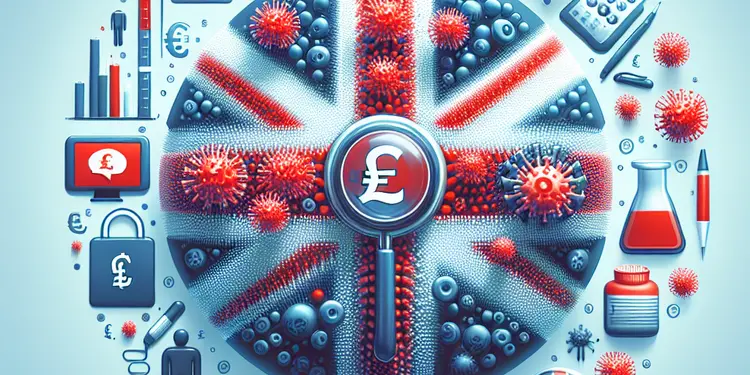
Is Zika virus screened for in blood transfusions?
Relevance: 36%
-
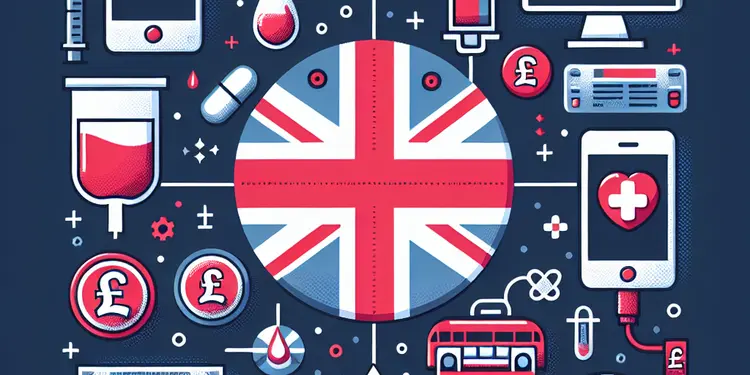
Is blood used for transfusions safe?
Relevance: 30%
-

Are there global differences in screening for blood transfusions?
Relevance: 28%
-
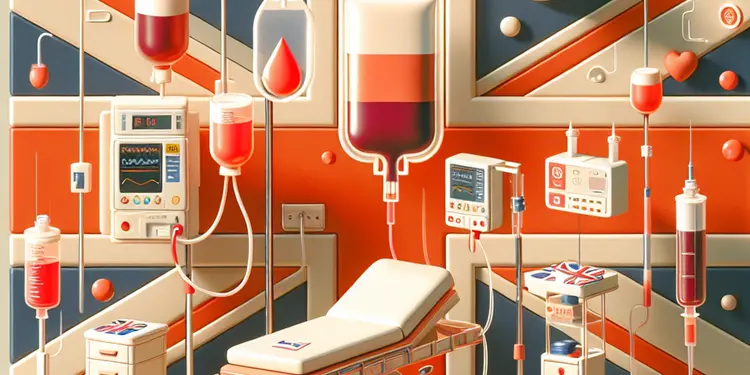
What should a patient expect after a blood transfusion?
Relevance: 27%
-
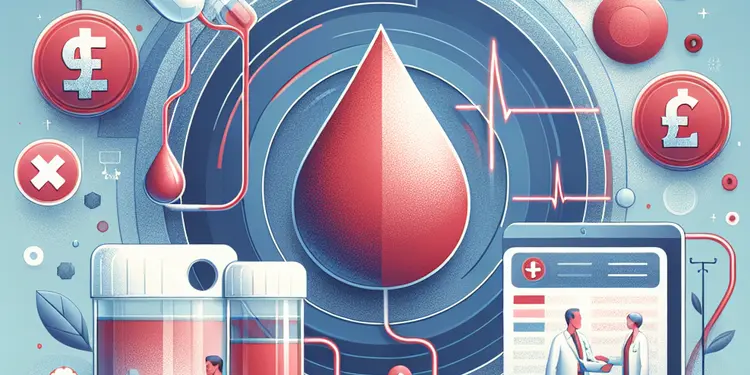
What kind of follow-up care is needed after a blood transfusion?
Relevance: 26%
-
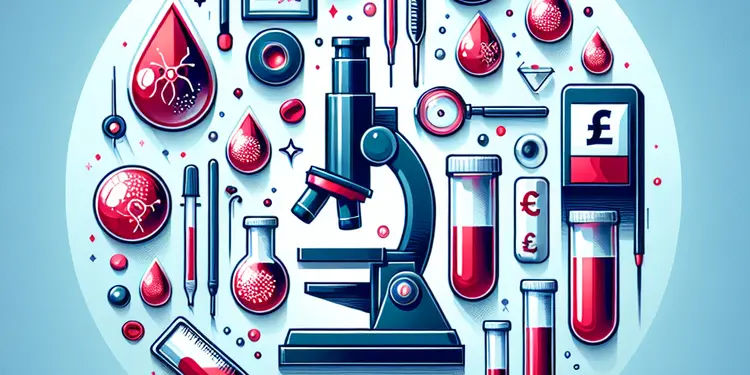
How is blood screened to prevent disease transmission?
Relevance: 24%
-
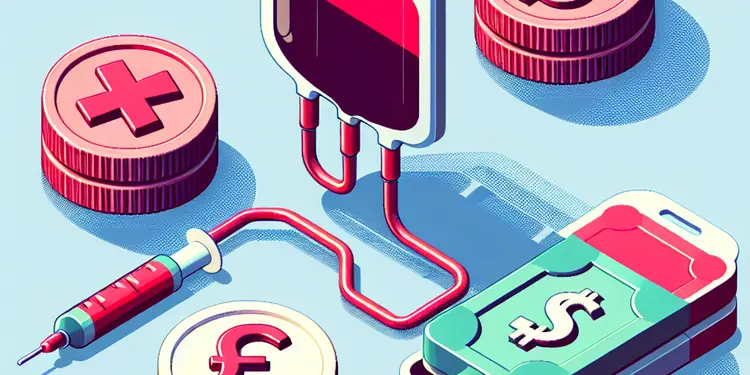
How is a blood transfusion performed?
Relevance: 19%
-
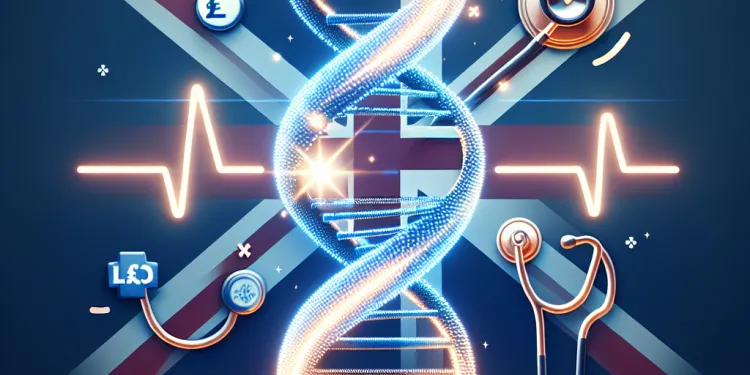
How is sickle cell disease treated?
Relevance: 17%
-
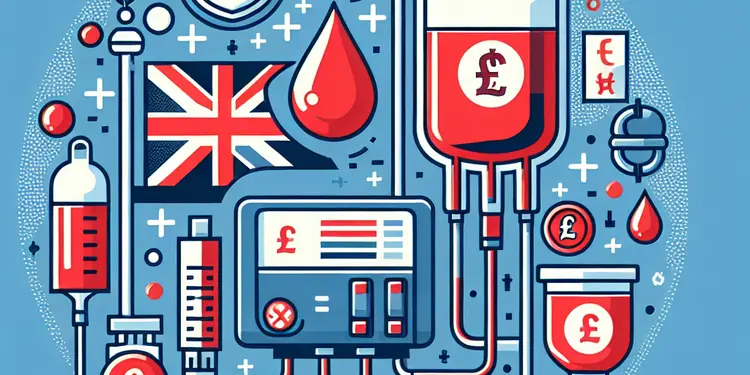
What alternatives exist if a blood transfusion is not an option?
Relevance: 16%
-

How is Type 2 Diabetes diagnosed?
Relevance: 15%
What is Plasma?
Plasma is the largest component of human blood, making up about 55% of its overall content. It is a clear, straw-colored liquid in which red blood cells, white blood cells, and platelets are suspended. Composed primarily of water, plasma also contains proteins, electrolytes, hormones, carbon dioxide, and waste materials. Plasma plays a crucial role in maintaining proper pH balance and osmotic pressure, as well as supporting immune function and blood clotting processes.
One of the critical functions of plasma involves the transportation of nutrients, hormones, and proteins to different parts of the body. Additionally, plasma carries waste products from the cells for excretion. Proteins found in plasma, such as albumin, globulins, and fibrinogen, are vital in maintaining blood viscosity, immune responses, and coagulation, respectively. Albumin, for example, helps to keep fluid from leaking out of blood vessels, while fibrinogen is essential for blood clot formation.
Why Might Plasma be Transfused?
Plasma transfusion is a medical procedure where plasma is given to a patient intravenously. This is done to treat a variety of conditions. Patients who might require a plasma transfusion include those suffering from liver failure, severe infections, or serious burns, as these conditions can lead to a deficiency of proteins and clotting factors which plasma can replenish. Plasma transfusions are also used in treating patients with bleeding disorders such as haemophilia or von Willebrand's disease, where the clotting factors present in plasma can aid in proper blood coagulation.
Another common reason for plasma transfusion is during massive blood transfusions where dilutional coagulopathy might occur. When a patient has undergone significant bleeding and received large volumes of blood components, the clotting factors may become diluted, necessitating plasma transfusion to replace the missing factors. Additionally, in the case of thrombotic thrombocytopenic purpura (TTP), a rare blood disorder, plasma exchange or plasma transfusion can help remove antibodies causing the condition and replenish the deficient enzyme.
In some scenarios, fresh frozen plasma (FFP), a type of plasma collected and frozen soon after donation, is used due to its preserved clotting factors, making it particularly useful in emergencies or where immediate clotting factor replenishment is necessary. Plasma transfusions are generally considered safe; however, like all medical procedures, they carry some risks such as allergic reactions, infections, or transfusion-related acute lung injury (TRALI).
Overall, plasma is an integral component of the blood with diverse functions and applications in medical treatments. Its ability to replenish essential proteins and clotting factors makes it invaluable in various clinical settings, contributing significantly to patient care and recovery processes.
What is Plasma?
Plasma is a big part of our blood. It makes up over half of our blood. Plasma is a clear, yellowish liquid. Red blood cells, white blood cells, and platelets float in it. Plasma is mostly water. It also has proteins, salts, hormones, carbon dioxide, and waste. Plasma helps keep the right amount of acid in our body. It helps with our immune system and helps our blood to clot.
Plasma moves important things around our body. It carries nutrients, hormones, and proteins to where they are needed. It also takes waste away from cells. Plasma has important proteins like albumin, globulins, and fibrinogen. Albumin stops liquid from leaking out of blood vessels. Fibrinogen helps form clots when we bleed.
Why Might Plasma be Transfused?
Plasma transfusion is when doctors give plasma to a patient through a tube in their vein. It helps with different health problems. People who might need plasma transfusion have liver problems, bad infections, or serious burns. These problems lower the proteins and clotting factors in their blood that plasma can replace. Plasma transfusions also help people with bleeding problems like haemophilia. The clotting factors in plasma help their blood to clot.
Doctors also use plasma transfusions when a person loses a lot of blood. If a patient has had a lot of bleeding and needs lots of blood replaced, the blood might not clot well. Plasma can help fix this by adding the missing clotting factors. For a rare blood problem called thrombotic thrombocytopenic purpura (TTP), plasma helps remove bad substances and adds missing enzymes.
Sometimes, fresh frozen plasma (FFP) is used. This plasma is taken and frozen quickly after donation. It keeps the clotting factors better, which is helpful in emergencies. Plasma transfusions are usually safe, but there can be some risks like allergic reactions, infections, or trouble with the lungs.
Overall, plasma is very important. It helps with medical treatments because it can replace proteins and clotting factors. This makes plasma very valuable in hospitals and helps people get better.
Frequently Asked Questions
What is plasma?
Plasma is the liquid portion of blood that remains after red blood cells, white blood cells, platelets, and other cellular components are removed. It is a light yellow fluid that contains water, salts, enzymes, antibodies, and other proteins.
What are the main components of plasma?
The main components of plasma include water, electrolytes, nutrients, hormones, waste products, and proteins such as albumin, globulins, and fibrinogen.
What is the function of plasma in the body?
Plasma serves various functions: transporting nutrients, hormones, and proteins; regulating body temperature; maintaining blood pressure and pH balance; and aiding in the immune response by carrying antibodies.
Why is plasma important for blood clotting?
Plasma contains clotting factors, particularly fibrinogen, which are essential for the blood clotting process to prevent excessive bleeding after an injury.
Why might a person need a plasma transfusion?
A person might need a plasma transfusion if they have a deficiency in clotting factors, experience massive blood loss, suffer from severe burns or liver disease, or have conditions that affect blood coagulation.
What conditions might require plasma transfusions?
Conditions such as hemophilia, liver disease, disseminated intravascular coagulation (DIC), thrombotic thrombocytopenic purpura (TTP), and extensive trauma or surgery may require plasma transfusions.
How is plasma collected for transfusion?
Plasma is collected either through whole blood donation, where it is separated from other blood components later, or through a process called plasmapheresis, where plasma is extracted directly from the donor's blood.
What is plasmapheresis?
Plasmapheresis is a procedure in which the liquid component of blood, plasma, is separated from cells and then either replaced or treated before being returned to the donor or patient.
Is plasma transfusion safe?
Yes, plasma transfusion is generally safe, but like any medical procedure, it carries some risks, including allergic reactions, infections, and transfusion-related acute lung injury (TRALI).
How long does it take to transfuse plasma?
The duration of a plasma transfusion can vary, but it typically takes about 30 minutes to an hour, depending on the volume of plasma being infused and the patient's condition.
Can anyone donate plasma?
Most healthy adults can donate plasma. However, donors must meet certain health and eligibility criteria set by blood collection organizations, including age, weight, and medical history requirements.
Are there different types of plasma used for transfusions?
Yes, plasma can be fresh frozen plasma (FFP), thawed plasma, or cryoprecipitate. Each type is used for specific clinical indications based on the clotting factor content and patient needs.
What is fresh frozen plasma?
Fresh frozen plasma (FFP) is plasma that has been separated from whole blood, frozen within hours of collection to preserve clotting factors, and stored for later use in transfusions.
How is plasma stored before transfusion?
Plasma is stored frozen to maintain the activity of clotting factors and is thawed before transfusion. It can be stored at freezing temperatures for up to one year.
What is cryoprecipitate and how is it related to plasma?
Cryoprecipitate is a component of plasma rich in clotting factors such as fibrinogen, factor VIII, and von Willebrand factor. It is used for patients with clotting deficiencies.
What are the blood types for plasma donation?
Unlike whole blood donations, plasma donations are not dependent on ABO blood type compatibility. AB plasma is considered universal because it can be transfused to recipients of any blood type.
What are potential side effects of plasma transfusion?
Potential side effects include allergic reactions, fever, hemolytic reactions, and transfusion-related acute lung injury (TRALI). However, these are rare.
Is plasma transfusion the same as a blood transfusion?
While both involve blood products, plasma transfusion specifically provides the liquid component of blood without cells, whereas a whole blood transfusion includes red blood cells and other components.
How can I become a plasma donor?
To become a plasma donor, find a local blood donation center, ensure you meet eligibility criteria, and undergo a screening process that includes a health questionnaire and a blood test.
What is the recovery process after plasma donation?
After plasma donation, donors are encouraged to rest, hydrate, and eat a healthy meal to quickly recover from the procedure. Most people can resume normal activities shortly after donating.
What is plasma?
Plasma is a special kind of matter. Matter is what everything is made of. Plasma is like a gas but has tiny bits called charged particles. These charged particles can make plasma glow.
We find plasma in places like stars, including our sun, and things like lightning.
Tools that can help:
- Text-to-Speech: This tool can read the words out loud.
- Pictures: Look for pictures of plasma to see what it looks like.
- Simple Videos: Watch videos that explain plasma with easy words.
Plasma is the liquid part of blood. It stays after we take out red blood cells, white blood cells, and other parts. Plasma looks light yellow. It has water, salt, enzymes, antibodies, and other proteins.
What is in plasma?
Plasma is a liquid in your blood. It has four main parts:
- Water: Most of plasma is water. It keeps your blood moving.
- Proteins: These help your body fight germs and stop bleeding.
- Salts: These help keep your muscles and nerves working.
- Sugars and fats: These give your body energy.
Tools that can help you understand better:
- Pictures of plasma and its parts.
- Simple videos about how blood works.
Plasma has important parts, like water, salts, food bits, hormones, waste, and proteins. The proteins are called albumin, globulins, and fibrinogen.
What Does Plasma Do in the Body?
Plasma is a part of your blood. It is like a clear, yellow liquid.
Plasma has important jobs:
- Carry nutrients: It takes vitamins and minerals to your body parts.
- Remove waste: It helps clean your blood by taking away waste.
- Fight sickness: It carries cells that help you stay healthy and fight germs.
Helpful tips for understanding:
- Read slowly and take breaks.
- Use a dictionary to look up hard words.
- Ask someone you trust if you have questions.
Plasma does many important jobs in your body. It carries food, hormones, and proteins to where they are needed. It helps keep your body warm and keeps your blood pressure stable. Plasma also helps keep the right balance of acidity in your blood. It helps your immune system by carrying antibodies that fight germs.
If you want help understanding this, you can use pictures or videos that explain how blood works. You can also use simple stories or diagrams to show how plasma helps your body. These tools can make learning easier and more fun!
Why does plasma help blood clot?
Plasma is the watery part of blood. It helps to stop cuts from bleeding. It does this by helping blood to stick together and form a clot.
If you have a cut, use a tissue or cloth to press on it. This can help stop bleeding while plasma makes a clot.
Plasma has important things in it that help blood to clot. These things stop us from bleeding too much when we get hurt.
Why does someone need plasma?
Plasma is a part of your blood. It helps keep you healthy.
Sometimes people need more plasma. This is called a plasma transfusion.
A doctor might give you plasma if you are very sick or have lost blood.
Here are some tools that can help understand:
- Pictures: Look at drawings of blood to see what plasma does.
- Videos: Watch videos about how plasma helps us feel better.
You might need plasma if:
- Your blood does not clot (stick together) properly.
- You lose a lot of blood quickly.
- You have really bad burns.
- Your liver is not working well.
- You have problems with your blood clotting.
Helpful Tips:
- Ask your doctor or nurse if you do not understand something.
- Use pictures or simple diagrams to help you know more.
When might someone need plasma transfusions?
Sometimes people need something called a plasma transfusion. Plasma is a part of your blood. It can help you feel better if you are sick. Here are some times when you might need it:
- If you have a disease that causes your blood not to clot properly.
- If you lose too much blood or have a bad injury.
- If you have a serious burn.
- If you have a disease that affects your liver.
If you or someone you know needs help with understanding, you can try these things:
- Ask a doctor or nurse to explain it.
- Use pictures or drawings.
- Listen to audio explanations.
Sometimes, people need special blood called plasma if they have certain health problems. These can include blood that doesn't clot well (like in hemophilia), liver problems, a blood clotting problem called DIC, or if they have had a lot of trouble with bleeding because of an injury or surgery.
Tools like text-to-speech or screen readers can help make reading easier. It's also good to read slowly, one sentence at a time.
How do we collect plasma for giving to someone else?
Plasma is a part of your blood. We take it by using a needle in your arm. It goes through a special machine. This machine takes the plasma out and gives the rest of the blood back to you.
People might feel better listening to music or talking to someone while this happens. Taking deep breaths can also help you stay calm.
Plasma is a part of your blood. You can donate plasma in two ways. One way is to give whole blood. Later, doctors take the plasma out. The other way is called plasmapheresis. This is when doctors take plasma directly from your blood.
What is plasmapheresis?
Plasmapheresis is a medical treatment. It takes out some blood from your body.
Then, it removes harmful things from your blood. After that, the clean blood goes back into your body.
This helps people feel better if they are sick.
If you have more questions, ask your doctor to explain it to you. They can help you understand.
Plasmapheresis is a way to clean blood. Doctors take out the liquid part of blood, called plasma. They treat or change it, and then put it back into the person.
Is it safe to get plasma from someone else?
Getting plasma from another person is mostly safe. Plasma is a part of blood that can help you get better if you are sick.
Doctors make sure the plasma is clean and healthy before giving it to you.
If you have questions, talk to your doctor. They can explain more.
If reading is hard, you can ask someone to help you understand this. You can also use tools like reading apps that read out loud.
Yes, getting plasma is usually safe. But, like other medical things, there can be some risks. These include allergies (when your body doesn't like something), infections (getting sick), and a lung problem called TRALI that makes it hard to breathe.
How long does it take to give plasma?
When someone gets plasma, it can take about 30 minutes to 1 hour.
If you need help reading, you can use:
- A family member or friend to read with you.
- An app that reads text out loud.
- Large print books or worksheets.
A plasma transfusion usually takes between 30 minutes and 1 hour. The time it takes can depend on how much plasma is given and how the patient is feeling.
Using a timer can help you keep track of the time. If you have questions, ask the nurse or doctor for help.
Who can give plasma?
Most healthy grown-ups can give plasma. But, they have to meet some health rules. Blood centers have rules about age, weight, and health.
Are there different kinds of plasma used for transfusions?
Yes, there are different kinds of plasma.
- Fresh Frozen Plasma (FFP) - This is plasma that is kept very cold until it is needed.
- Plasma from a Single Donor - This is plasma that comes from one person.
- Plasma from Several Donors - This is plasma that is mixed from more than one person.
If you need help reading, you can:
- Ask someone to read with you.
- Use an app to read the words out loud.
- Look up pictures or videos about plasma transfusions.
Yes, there are different types of plasma.
Fresh frozen plasma (FFP), thawed plasma, and cryoprecipitate are all types of plasma.
Doctors use these for different reasons because they have different things inside them that help with blood clotting.
Doctors choose the right one based on what the patient needs.
If you have trouble reading, ask someone to read this to you, or try using text-to-speech tools.
What is fresh frozen plasma?
Fresh frozen plasma is a part of blood. It is the liquid part that carries blood cells. It helps blood to flow and works to stop bleeding.
If reading is hard, you can:
- Ask someone to read with you.
- Use audiobooks to listen.
- Use apps that read text out loud.
Fresh frozen plasma (FFP) is a part of blood. It is taken out and frozen quickly. This keeps it good for use later. It can help people when they need more blood.
How do we keep plasma safe before it is given to someone?
We freeze plasma to keep it safe. It stays in a very cold place until we need it. When it is needed, we warm it up carefully. This way, it is ready to help the person who needs it.
If you need help to understand this, try using pictures or asking a friend or helper to explain it to you.
Plasma is kept in a freezer. This helps it stay fresh and keeps special parts called clotting factors working. Before we can use plasma to help someone, we have to warm it up. We can keep plasma in the freezer for a whole year.
What is cryoprecipitate and how is it related to plasma?
Cryoprecipitate: This is a part of blood.
Plasma: Plasma is the yellow liquid part of blood that has proteins in it.
Relation: Cryoprecipitate comes from plasma. It has some important proteins that help blood to clot.
Tip: Use fun videos or books with pictures about blood to understand better.
Cryoprecipitate is a part of blood plasma. It has special things in it that help blood to clot, like fibrinogen, factor VIII, and von Willebrand factor. Doctors use cryoprecipitate to help people who have problems with blood clotting.
What blood types can give plasma?
People have different blood types. This affects if they can give plasma. Plasma is a part of your blood that can help others.
Here are some tips to help understand:
- Type AB: People with AB blood can give plasma to anyone. They are special plasma donors.
- Type A and Type B: People with these blood types can give plasma too, but it usually goes to people with similar blood types.
- Type O: Type O plasma can usually go to people with Type O blood.
If you want to give plasma, talk to a doctor or nurse. They can help you know if you can give plasma and who it will help.
Plasma donations are different from giving whole blood. They don't need to match blood types. People with AB plasma can help anyone because it can be given to anyone, no matter their blood type.
What can happen after getting plasma?
Sometimes, when you get plasma, your body might not feel right.
Here are some things that might happen:
- You could feel itchy or get a rash.
- You might feel tired or have a fever.
- Sometimes, you might have trouble breathing.
- Your body might feel swollen.
- You could feel dizzy or have a headache.
Always tell a doctor or nurse if you feel strange.
It helps to talk to someone about how you feel. Don't worry; they can help you.
Using apps or talking devices can help you understand better.
Sometimes, blood transfusions can make people feel unwell. This can happen if their body is allergic to the new blood. They might also get a fever or have problems with their blood. This can cause issues with their lungs. But don’t worry, these problems do not happen very often.
If you need help to understand better, try these ideas:
- Ask someone to explain the information to you.
- Read the text out loud to hear the words.
- Use drawings or images to help you understand the words.
Is plasma transfusion the same as a blood transfusion?
No, they are not the same, but they are similar.
A blood transfusion gives a person all parts of blood. This includes red cells, white cells, platelets, and plasma.
A plasma transfusion only gives a person plasma. Plasma is the liquid part of the blood that helps with healing and fighting disease.
To help understand, you can use pictures or diagrams to show the differences. It might also help to talk with a doctor or nurse.
Plasma transfusion gives you just the liquid part of blood. This means no blood cells. Whole blood transfusion gives you everything, including red blood cells. A reading helper tool or a picture of blood can help you understand better.
How can I give plasma?
If you want to give plasma, go to a place where you can give blood. Make sure you are allowed to give plasma. You will need to answer some health questions and have a small blood test first.
How do you feel better after giving plasma?
After giving plasma, it is important to rest. Drink lots of water and eat a healthy meal. This helps you feel better and get your energy back. Most people can do their normal activities soon after giving plasma.
Useful Links
- Ergsy carfully checks the information in the videos we provide here.
- Videos shown by Youtube after a video has completed, have NOT been reviewed by ERGSY.
- To view, click the arrow in centre of video.
- Most of the videos you find here will have subtitles and/or closed captions available.
- You may need to turn these on, and choose your preferred language.
- Go to the video you'd like to watch.
- If closed captions (CC) are available, settings will be visible on the bottom right of the video player.
- To turn on Captions, click settings .
- To turn off Captions, click settings again.
More Items From Ergsy search
-

What is plasma, and why might it be transfused?
Relevance: 100%
-

What types of blood products can be transfused?
Relevance: 65%
-

What is a blood transfusion?
Relevance: 60%
-

Blood Product Transfusions
Relevance: 60%
-

Blood Transfusion
Relevance: 56%
-

Can syphilis be transmitted via blood transfusion?
Relevance: 53%
-

How long does a blood transfusion take?
Relevance: 52%
-

Can bacterial infections be transmitted through blood transfusion?
Relevance: 49%
-

How do healthcare providers match blood for transfusions?
Relevance: 47%
-

Can cytomegalovirus (CMV) be spread through transfusions?
Relevance: 45%
-

Can you get any prion diseases from blood transfusion?
Relevance: 45%
-

Can COVID-19 be transmitted through blood transfusions?
Relevance: 44%
-

What measures are taken to prevent disease transmission in blood transfusions?
Relevance: 43%
-

Are there risks associated with blood transfusions?
Relevance: 42%
-

What are some common reasons blood transfusions are needed?
Relevance: 42%
-

Can HIV be transmitted through blood transfusions?
Relevance: 42%
-

Can certain medical conditions prevent receiving blood transfusions?
Relevance: 41%
-

How do doctors determine how much blood is needed for a transfusion?
Relevance: 41%
-

Is there an age limit for receiving blood transfusions?
Relevance: 41%
-

Why might someone need a blood transfusion?
Relevance: 40%
-

Is HTLV a risk in blood transfusions?
Relevance: 40%
-

Is Hepatitis B a risk in blood transfusions?
Relevance: 39%
-

What diseases can be spread by blood transfusions?
Relevance: 39%
-

Can people of any blood type receive a transfusion of any blood type?
Relevance: 39%
-

Can someone have a reaction to a mismatched blood transfusion?
Relevance: 39%
-

Is Chagas disease a concern with blood transfusions?
Relevance: 38%
-

What is the most common disease transmitted by blood transfusion?
Relevance: 37%
-

Are there any parasites that can be transmitted through blood transfusions?
Relevance: 37%
-

Can Dengue fever be transmitted through blood transfusions?
Relevance: 37%
-

Is malaria still a concern for blood transfusion safety?
Relevance: 36%
-

Is Zika virus screened for in blood transfusions?
Relevance: 36%
-

Is blood used for transfusions safe?
Relevance: 30%
-

Are there global differences in screening for blood transfusions?
Relevance: 28%
-

What should a patient expect after a blood transfusion?
Relevance: 27%
-

What kind of follow-up care is needed after a blood transfusion?
Relevance: 26%
-

How is blood screened to prevent disease transmission?
Relevance: 24%
-

How is a blood transfusion performed?
Relevance: 19%
-

How is sickle cell disease treated?
Relevance: 17%
-

What alternatives exist if a blood transfusion is not an option?
Relevance: 16%
-

How is Type 2 Diabetes diagnosed?
Relevance: 15%


